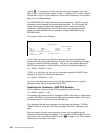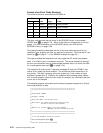Iᑍ
IᑍLicensed Materials-Property of IBM
Iᑍ
Iᑍ
IᑍDescription: Include header file for the error code parameter.
Iᑍ
IᑍHeader Files Included: None.
Iᑍ
IᑍMacros List: None.
Iᑍ
IᑍStructure List: Qus_EC_t
Iᑍ
IᑍFunction Prototype List: None.
Iᑍ
IᑍChange Activity:
Iᑍ
IᑍCFD List:
Iᑍ
IᑍFLAG REASON LEVEL DATE PGMR CHANGE DESCRIPTION
Iᑍ---- ------------ ----- ------ --------- ----------------------
Iᑍ$A= D2862 3D1 93121 DPOHLSON: New Include
Iᑍ
IᑍEnd CFD List.
Iᑍ
IᑍAdditional notes about the Change Activity
IᑍEnd Change Activity.
Iᑍᑍᑍ END HEADER FILE SPECIFICATIONS ᑍᑍᑍᑍᑍᑍᑍᑍᑍᑍᑍᑍᑍᑍᑍᑍᑍᑍᑍᑍᑍᑍᑍᑍᑍᑍᑍᑍᑍᑍ
Iᑍᑍᑍᑍᑍᑍᑍᑍᑍᑍᑍᑍᑍᑍᑍᑍᑍᑍᑍᑍᑍᑍᑍᑍᑍᑍᑍᑍᑍᑍᑍᑍᑍᑍᑍᑍᑍᑍᑍᑍᑍᑍᑍᑍᑍᑍᑍᑍᑍᑍᑍᑍᑍᑍᑍᑍᑍᑍᑍᑍᑍᑍᑍᑍᑍ
IᑍRecord structure for Error Code Parameter
Iᑍᑍᑍᑍ ᑍᑍᑍ
IᑍNOTE: The following type definition defines only the fixed
Iᑍ portion of the format. Varying-length field exception
Iᑍ data is not defined here.
Iᑍᑍᑍᑍᑍᑍᑍᑍᑍᑍᑍᑍᑍᑍᑍᑍᑍᑍᑍᑍᑍᑍᑍᑍᑍᑍᑍᑍᑍᑍᑍᑍᑍᑍᑍᑍᑍᑍᑍᑍᑍᑍᑍᑍᑍᑍᑍᑍᑍᑍᑍᑍᑍᑍᑍᑍᑍᑍᑍᑍᑍᑍᑍᑍᑍ
IQUSBN DS
Iᑍ Qus EC
I B 1 4QUSBNB
Iᑍ Bytes Provided
I B 5 8QUSBNC
Iᑍ Bytes Available
I 9 15 QUSBND
Iᑍ Exception Id
I 16 16 QUSBNF
Iᑍ Reserved
Iᑍ 17 17 QUSBNG
Iᑍ
Iᑍ Varying length
I 17 2 QUSBNG 16
.
.
.
C Z-ADD2 QUSBNB
Cᑍ
C CALL 'QWDRJOBD'
C PARM QWDBH Receiver Var.
C PARM RCVLEN Length RCVVAR
C PARM FORMAT Format Name
C PARM LFNAM Qual. Job Desc
C PARM QUSBN Error Code
The value placed in the QUSBNG variable 16 is the message data associated
with the message ID that is identified as the exception. The message data follows
the same format as if you had entered a Receive Message (RCVMSG) command
and requested the message data (MSGDTA) parameter. You can use the Display
Message Description (DSPMSGD) command to determine the layout of the
message data for a particular message ID. When you handle exceptions, the only
information provided is the exception ID and the message data associated with the
3-16 System API Programming V4R1


















